Seasons – September 2023
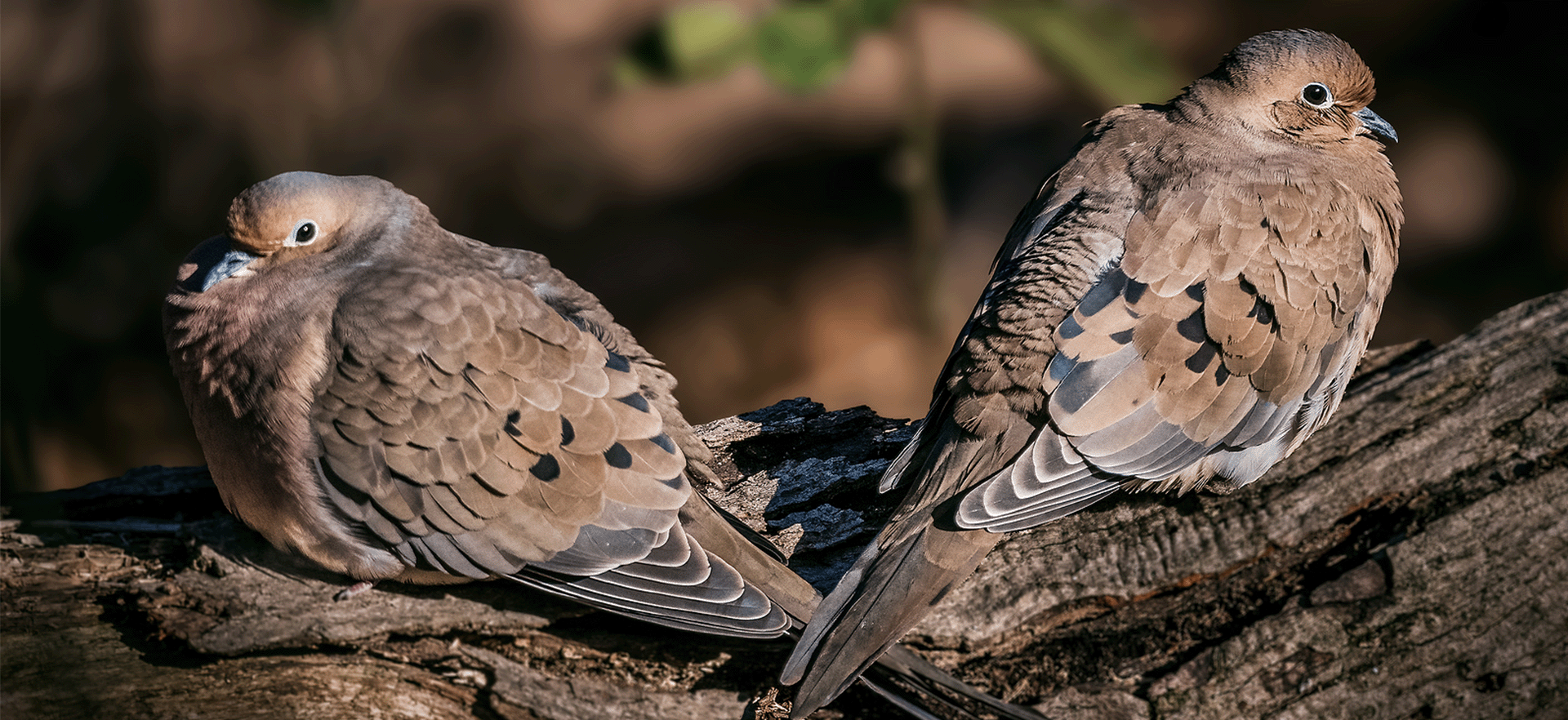
From the Plateau Land & Wildlife Management Team
We experienced many hot and dry months this summer, and as much as we are looking forward to a reprieve, our land and wildlife are too. As the summer comes to a close, it is more important than ever to think about the water and food sources available on your land, and how to protect and conserve the resources that critters rely on to survive.
In this issue of Seasons we offer fun and timely outdoor activities this fall, including fall birds you can look for in your very backyard, wildlife management activity suggestions for supplemental food, webinars for landowners, upcoming events, news and articles for Texas landowners, and more.
As always, we hope you enjoy all that this month has to offer!
Until next Seasons,
The Plateau Team

Table of Contents
Five Tips To Attract Backyard Birds
Activity Reminder: Supplemental Food
Fall Wildlife Webinar Series
Guest Feature: Texan By Nature shares free informational Landowner Guide
Vote YES on Prop. 14 to Grow Texas Parks
Plateau Joins Upcoming Landowner Workshops as Featured Guest Speaker
News for Texas Landowners
5 Tips To Attract Backyard Birds
By Danielle Belleny, Plateau Staff Biologist II
Attracting birds to your yard can be a fun and exciting activity for all ages to participate in. With fall and winter bird migrations just around the corner, providing a few essential items for birds can turn your yard into a choice rest stop. You and your family will have many opportunities to watch and listen to the feathered visitors while they feed, drink, and rest their wings before heading further south.
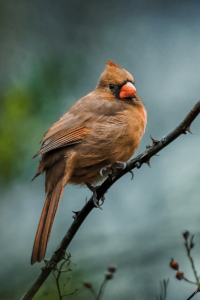
Here are 5 tips to attract some common fall & winter visitors:
-
- Provide feeders – Providing a regular source of food is the first step to attracting birds to your yard. Bird feeders come in a variety of shapes and features. Selecting the right one for your home is a matter of personal choice. You can evenmake your own bird feeders using recycled materials from home. Go a step further and experiment with seed mixes to see if food type changes the species that visit. Feeders can bring unexpected species together!
- Provide water – On both hot and cold days, water is needed for birds to survive. Due to the lack of rain in the winter, water sources can be difficult to come by. Provide birds fresh water in a shallow dish. Include a log or large stone in the dish so that bathing birds can climb out of the water dish easily. On days where the temperature is near freezing, it is important to make sure the water doesn’t freeze.
- Provide shelter – After making such long migratory flights, exhausted birds are in search of a safe place to land. Provide sources of shelter like bushes, patches of un-mowed grass, piles of brush, or trees to protect birds from harsh weather and predators. These sources of shelter can also provide seeds, berries, and insects for the birds to eat.
- Regularly clean feeders and water – Outdoor bird feeders with dry seed should be cleaned weekly with 9 parts water to 1 part bleach. Feeders should be cleaned more often if there is any moisture from rain, ice, or snow. To keep your water dishes and birdbaths fresh, just rinse and scrub it with nine parts water, one part vinegar. Skip the synthetic soaps and cleansers; they can strip the essential oils off of bird feathers. Concentrated areas that have frequent visitors could potentially accumulate harmful bacteria or viruses that negatively impact wildlife. Cleaning feeders regularly helps prevent the spread of disease. Wash your hands after handling bird supplies.
- Keep track of visitors – Stay vigilant and set aside a regular time that you and your family can observe the birds that stop by. Keep a log of the species observed at your feeder and the dates you encountered them. If you have trouble identifying a bird, try taking a photo and emailing it to our biologists to assist. Additionally, mobile apps like Merlin Bird ID are able to identify birds from the photos in your camera roll. Merlin Bird ID can also identify birds singing around you and show real-time suggestions for who’s singing. Other apps like Audubon Bird Guide App have large libraries of bird sounds and images to further help you identify birds.
Here are 4 species Texans all over can expect to see in their yards this fall and winter:
Northern Cardinal – Among the most abundant species on the continent, the Northern Cardinal is a brightly colored bird sure to grab anyone’s attention. Adult male cardinals have the characteristic ruby–red feathers and black-masked faces. The feather color of cardinals, and most other birds with reds, oranges, and yellow feathers, derives from the keratin pigments in their food sources. Male cardinals that eat high–quality red-colored berries become even more vibrant. Female cardinals and juvenile cardinals have an overall greyish-tan color with flashes of red on the margins of their wings and tails. Both sexes have the prominent crest atop their heads.
Carolin wren – The Carolina Wrens are shy, year-round residents that frequent homes and gardens during the day. They energetically hop through bushes, climb along tree trunks, and flip over fallen leaves in search of insects and spiders, the bulk of the wren’s diet. Wrens have a loud and varied repertoire, making them more likely to be heard before they are sighted. The entire song usually lasts less than 2 seconds and the notes are usually described as three-parted, as a repeated teakettle or “Ger-man-y”. Males and females have nearly identical plumage and usually mate for life.
Cedar Waxwing – The Cedar Waxwing is named for the red, wax-like droplets on the tips of adult bird flight feathers. Additionally, adults have sharp black face masks edged with white, black chin-patches, and pale-yellow belly feathers. Cedar Waxwings love sugary fruits, like Ashe Juniper berries, which dominate the diet of this bird. In fall and winter, these birds gather by the hundreds to eat berries, filling the air with their high, thin, whistles. Cedar Waxwings can eat naturally fermented berries still attached to Ashe Juniper. In fact, they sometimes overindulge on fermented berries, causing unusual and laughable bird behavior.
Pine Siskins – In the winter, they are visitors at feeders across Texas, however, Pine Siskins are an irruptive species, meaning their numbers in a given locality are unpredictable from one year to the next due to the annual variation in the distribution and abundance of seeds that make up the bulk of their diet. Pine Siskins flock to thistle and other small seeds such as millet or hulled sunflower seeds. Be on the lookout for exceptionally streaky, small-billed bird at your feeder. Also, listen for their distinctive call which sounds like slowly tearing a sheet of paper in two.
- Northern Cardinal
- Carolin wren
- Cedar Waxwing
- Pine Siskins
If you have questions, or need assistance identifying a particular bird species, feel free to contact us at (512) 894-3479 or [email protected].
Back to TopBack to Top
Guest Feature: Texan By Nature develops Landowner Guide
Guest Feature By Jenny Burden, Director of Development for Texan by Nature
 Texan by Nature (TxN) exists to advance conservation that is beneficial to people, prosperity, and natural resources. This means working with all Texans, from large corporations, to conservation nonprofits and state agencies, to landowners working to find the best ways to manage their natural resources for economic benefit and recreational enjoyment. When every Texan works together to find mutually beneficial ways to conserve and protect natural resources, we ensure the beauty of our Texas today is there for future generations.
Texan by Nature (TxN) exists to advance conservation that is beneficial to people, prosperity, and natural resources. This means working with all Texans, from large corporations, to conservation nonprofits and state agencies, to landowners working to find the best ways to manage their natural resources for economic benefit and recreational enjoyment. When every Texan works together to find mutually beneficial ways to conserve and protect natural resources, we ensure the beauty of our Texas today is there for future generations.
Hundreds of programs to help landowners make the most of their properties exist, but navigating how to find them, who to talk to, and what it means to get involved is complicated. Texan by Nature recognized how overwhelming the information could be, and did our best to put together a document that corrals these options into one location, making is easier to see what’s out there and what fits a landowner’s unique situation best. We’ve broken down acronyms, sources, definitions, and program descriptions to help landowners build their toolbox for caring for their land. Whether you care about pollinators, migratory birds, or managing for game animals, there is likely a program out there get assistance enhancing your property.
Learn more by checking out the new Texan by Nature Landowner Guide.
In 2020, Plateau Land & Wildlife Management was announced as an honoree of the 2nd annual Texan by Nature 20 (TxN 20) Oct. 20 – an official ranking of companies with Texas operations that have made a demonstrative commitment to conservation. The TxN 20 provides not only recognition to honorees, but a catalogue of best practices and metrics to industry peers. Learn more about Texan By Nature here.
Back to TopBack to Top
Wildlife Management Activity Reminder: Supplemental Food
By Kameron Bain, Landowner Account Manager
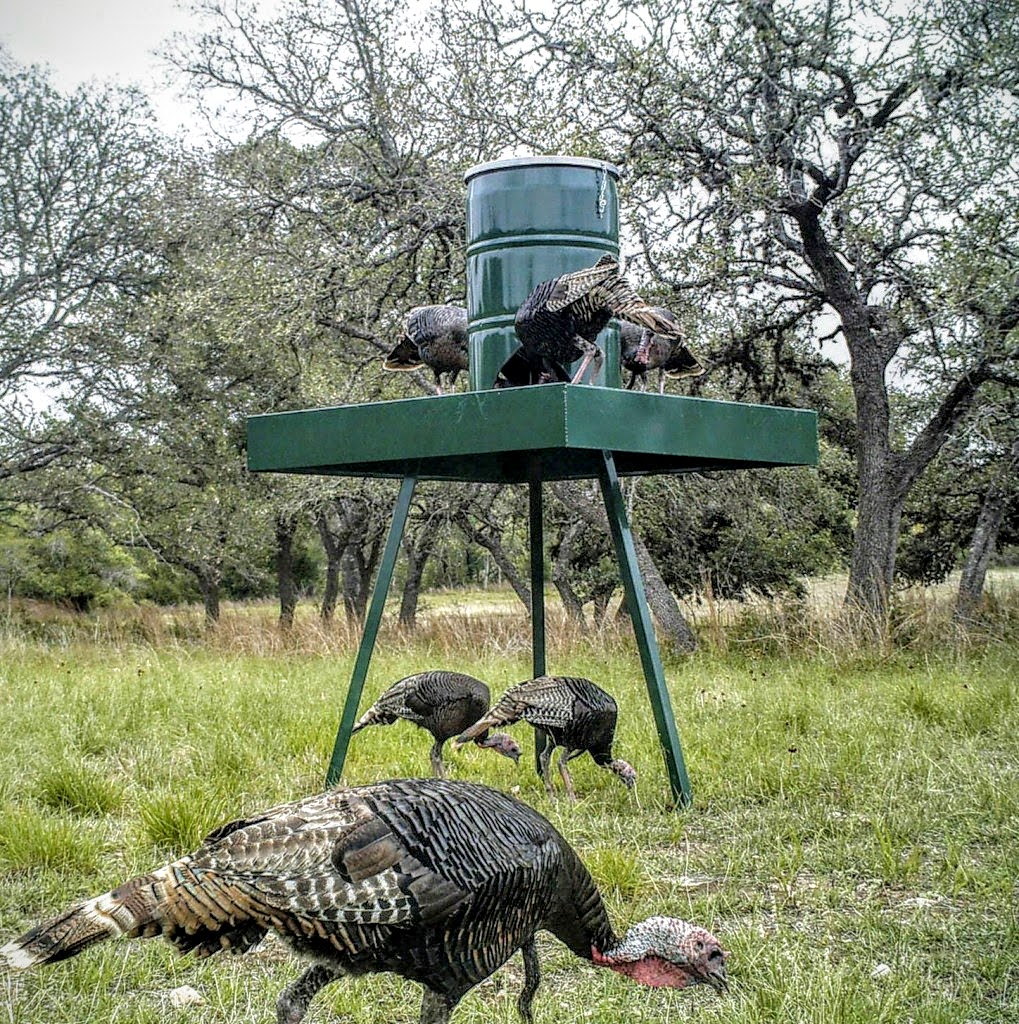 As landscapes become more fragmented, so can wildlife food resources. There’s no better food source than quality habitat, but supplements can serve a role in your management. Providing feeders for wild turkey and other wild birds can attract, retain, and possibly improve their populations on your property. Supplementing wildlife with high-quality food sources can improve nutrition during stressful/dry times of the year or pivotal times in their life cycle. Common motivations for this are feeding protein supplements to deer during antler growth or providing food to birds during migration and breeding. Concentrated supplemental food sources like feeders or food plots are also great ways to attract wildlife for observation and population surveys.
As landscapes become more fragmented, so can wildlife food resources. There’s no better food source than quality habitat, but supplements can serve a role in your management. Providing feeders for wild turkey and other wild birds can attract, retain, and possibly improve their populations on your property. Supplementing wildlife with high-quality food sources can improve nutrition during stressful/dry times of the year or pivotal times in their life cycle. Common motivations for this are feeding protein supplements to deer during antler growth or providing food to birds during migration and breeding. Concentrated supplemental food sources like feeders or food plots are also great ways to attract wildlife for observation and population surveys.
How does supplemental food fit into my Wildlife Management Plan?
Texas wildlife tax valuation law allows landowners to qualify in the supplemental food category by providing high-quality, free-choice food resources to targeted wildlife species. The recommended rate of one feeder per 320 acres qualifies for credit within the supplemental food category, though a higher density of strategically placed feeders will offer added benefits for some species. Feeders often improve opportunities for wildlife observations enjoyed by landowners and can be utilized with survey techniques to assist in census efforts, another qualifying Wildlife Management activity.
What is an appropriate food source?
The food source should fit your target species. Protein or mineral supplements for deer, mixed grains for Wild Turkey, seed mixes for songbirds, and nectar for hummingbirds are all appropriate. Food plots should provide both warm-season (late spring-early fall) plants and cool-season (late fall-early spring) plants for your target species. For deer, that often means legumes in the summer and oats or other cereal grains in the winter, though there are a lot of options available for deer food plots. When manipulating natural vegetation, the goal is to stimulate plants that are already in the soil (usually under-appreciated forbs/wildflowers, aka weeds).
What does NOT qualify as a supplemental food source under Wildlife Management?
- Placing a feeder or providing supplements outside the area designated for Wildlife Management valuation on your property – for example, if you were to place a feeder inside the boundary of your residential area, this would not count as a Wildlife Management activity.
- Using a spin-cast feeder. Timed feeders are great for wildlife watching and hunting but don’t serve wildlife as well since you are controlling how much they can eat.
- Using only corn as a food source. Again – corn is great for hunting and wildlife watching, but it is a bait, not a qualifying food supplement.
Whether you are in Wildlife Management and providing supplemental food as a qualifying activity, or are just looking to improve the wildlife on your property, providing food during hot and dry periods is an important aspect of good land management. Plateau has a range of feeders, from quail and small wildlife stations to platform feeders. Contact us if you’re interested in learning more about your qualifying Wildlife Management activities or to learn more about our feeder options – (512) 894-3479 or [email protected].
Plateau Land & Wildlife: Fall Management Series

Considering Converting to a Wildlife Exemption in 2024?
Plateau’s upcoming Webinar Series will detail how a Wildlife Management property tax valuation, more commonly referred to as a “Wildlife Exemption,” can benefit you and your property. Connect with experts and other Texas landowners in Wildlife Management and learn all about: Wildlife Management Exemption, Wildlife Management 101, Qualifying Wildlife Activities, Property Taxes, Wildlife Management Plans, Annual Reports, County Requirements, Texas Regional Topics, Open Questions & Answers and more
Plus, join us for special Guest Kickoff Presentations from industry experts like Texas A&M AgriLife Extension, Texas Wildlife Association, and Braun & Gresham, PLLC!
Webinars will be hosted on Tuesdays starting September 19th through November 14th. Visit plateauwildlife.com/webinars to register for the date and topic you choose. Register for as many as you’d like. If you miss one, no problem, just sign up for the next webinar!
Questions? Give us a call at (512) 894-3479 or email [email protected]
Back to TopBack to Top
VOTE YES on Proposition 14 on November 7 to Grow Texas Parks
 This year, Texas is celebrating the 100th anniversary of our system of State Parks. To mark the centennial, Texans statewide will have the opportunity to vote on November 7 to support a Constitutional Amendment (Proposition 14) to create the Centennial Parks Conservation Fund. This $1 billion fund will help secure new parks for future generations of Texans to explore and enjoy, without increasing taxes.
This year, Texas is celebrating the 100th anniversary of our system of State Parks. To mark the centennial, Texans statewide will have the opportunity to vote on November 7 to support a Constitutional Amendment (Proposition 14) to create the Centennial Parks Conservation Fund. This $1 billion fund will help secure new parks for future generations of Texans to explore and enjoy, without increasing taxes.
In support of the Centennial Parks Conservation Fund, Plateau Land and Wildlife and Braun and Gresham have joined the Texas Coalition for State Parks — a diverse range of 77 organizations from around the state who have come together to support this once-in-a-generation effort to grow Texas parks.
“We are thrilled to be a part of this important initiative,” said Billie Dunn, Director of Marketing for Plateau Land & Wildlife and Braun and Gresham. “We believe that this is a critical time to come together to preserve and protect our natural resources. We are committed to working with our partners to make a difference.”
Earlier this year, legislation to place the fund on the ballot passed both chambers of the Texas Legislature with overwhelming bipartisan support. And, in every poll on parks in the last two decades, Texans have signaled strong support for State Parks. In fact, 77% of voters said they would support the constitutional amendment in a poll conducted this summer. It is clear that the majority of Texans value State Parks and the experiences they provide.
Investing in parks conserves land and water resources, which protects Texas’ quality of life so future generations can enjoy our land, water, and natural beauty the way we do. Constitutional Amendment elections have historically low turnout, so let’s do our part and spread the word to family, friends, and neighbors to VOTE YES on Proposition 14 on November 7th to Grow Texas Parks!
For more information, please visit: http://www.growtexasparks.org/.
Back to TopBack to Top
Plateau Featured Speaker at Upcoming AgriLife Extension and TWA Workshops
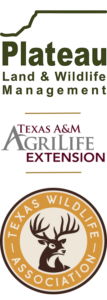 Plateau Representatives are partnering with organizations around the state to cover information on a broad number topics of interest to Texas landowners. Our experts will be on hand and ready to discuss how a Wildlife Management valuation, more commonly referred to as “Wildlife Exemption”, can simplify owning land in Texas.
Plateau Representatives are partnering with organizations around the state to cover information on a broad number topics of interest to Texas landowners. Our experts will be on hand and ready to discuss how a Wildlife Management valuation, more commonly referred to as “Wildlife Exemption”, can simplify owning land in Texas.- September 21 — Texas Wildlife Association Small Acreage, Big Opportunity Workshop
New Braunfels, Texas - September 25 — Texas AgriLife Extension Owning Your Piece of Texas
Rosenberg, Texas - September 26 — Texas AgriLife Extension Owning Your Piece of Texas
Emory, Texas - October 5 — Texas Wildlife Association Small Acreage, Big Opportunity Workshop
Dripping Springs, Texas
Stay tuned to learn about additional upcoming events!
Back to TopBack to Top
News for Texas Landowners
Heat, drought and population growth have stressed aquifers that supply water to millions of Texans
Article by Texas Tribune
Almost every other day, Charlie Flatten gets a call about another local water well gone dry. Last week, he tried to help one woman find a water truck to fill her home cistern. But all the hauling companies had suspended service amid a deepening shortage in Central Texas. “She’s got to go find somewhere else to live,” said Flatten, general manager of the Hays Trinity Groundwater Conservation District in Dripping Springs. “This is extremely serious.” Here in the booming Hill Country southwest of Austin, Flatten said, the Trinity Aquifer is at its lowest level on record. Across the region, iconic natural springs are dwindling or drying up, victims of extreme heat, persistent drought and ever-growing demand for water.
Hill Country Alliance hosts Riparian Workshop Series in Boerne
Information by Hill Country Alliance
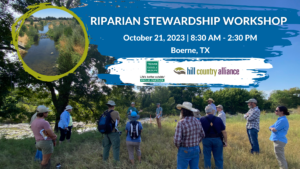 Join Hill Country Alliance and the Texas Parks and Wildlife Department on October 21st for the first workshop in a three-part riparian series. This workshop series is tailored specifically to river- and creek-side landowners in the Hill Country and features Steve Nelle, who literally and figuratively wrote the book on stewarding Texas riparian areas! It’s a great opportunity for local landowners to learn from topic experts on practices and hands-on skills that can help enhance and protect their stretch of a stream. This year’s series will take place at a beautiful family ranch on the Guadalupe River in Boerne, TX. (Space is limited).
Join Hill Country Alliance and the Texas Parks and Wildlife Department on October 21st for the first workshop in a three-part riparian series. This workshop series is tailored specifically to river- and creek-side landowners in the Hill Country and features Steve Nelle, who literally and figuratively wrote the book on stewarding Texas riparian areas! It’s a great opportunity for local landowners to learn from topic experts on practices and hands-on skills that can help enhance and protect their stretch of a stream. This year’s series will take place at a beautiful family ranch on the Guadalupe River in Boerne, TX. (Space is limited).
Drought across Texas worsens with no rainfall in sight
Texas Crop and Weather Report via AgriLife
 High temperatures and drought conditions have persisted throughout the summer months in Texas, with little rain to provide relief. While tropical storm Harold brought some relief along the coast of Texas, according to the Texas state climatologist, much of the state has witnessed above average temperatures — 4 to 8 degrees above normal and in the triple digits. “The coast of Texas and the West Texas mountains were able to find temperature relief from recent rainfall, but most of the state has experienced triple degree weather with no relief expected in the near future,” said John Nielsen-Gammon, Ph.D., state climatologist and Regents Fellow in the Texas A&M College of Geosciences Department of Atmospheric Sciences.The Texas drought monitor map showed increased drought conditions during the last three months and the previous year overall…
High temperatures and drought conditions have persisted throughout the summer months in Texas, with little rain to provide relief. While tropical storm Harold brought some relief along the coast of Texas, according to the Texas state climatologist, much of the state has witnessed above average temperatures — 4 to 8 degrees above normal and in the triple digits. “The coast of Texas and the West Texas mountains were able to find temperature relief from recent rainfall, but most of the state has experienced triple degree weather with no relief expected in the near future,” said John Nielsen-Gammon, Ph.D., state climatologist and Regents Fellow in the Texas A&M College of Geosciences Department of Atmospheric Sciences.The Texas drought monitor map showed increased drought conditions during the last three months and the previous year overall…
UT to open research station in Dripping Springs
By Elle Bent for Community Impact
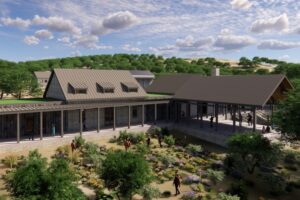 Dripping Springs will be the next location of a research and conservation site from The University of Texas. The Hill Country Field Station, recently announced by the university, will be located at Mirasol Springs, a development on the Pedernales River from Steve Winn, founder of RealPage and CEO of Mirasol Capital, companies focused on the real estate industry. In addition to the field station, the property will consist of a hotel, cottages and homesites, according to Mirasol Springs’s website. An exact address for the Hill Country Field Station has not yet been announced as the project is still in its early stages, said Christine Sinatra, director of communications for the UT College of Natural Sciences. The 340-acre site was funded in part by the Winn Family Foundation, which donated over $50 million to the site, as well as by $150 million in additional university donations…
Dripping Springs will be the next location of a research and conservation site from The University of Texas. The Hill Country Field Station, recently announced by the university, will be located at Mirasol Springs, a development on the Pedernales River from Steve Winn, founder of RealPage and CEO of Mirasol Capital, companies focused on the real estate industry. In addition to the field station, the property will consist of a hotel, cottages and homesites, according to Mirasol Springs’s website. An exact address for the Hill Country Field Station has not yet been announced as the project is still in its early stages, said Christine Sinatra, director of communications for the UT College of Natural Sciences. The 340-acre site was funded in part by the Winn Family Foundation, which donated over $50 million to the site, as well as by $150 million in additional university donations…
What you need to be on the lookout for as baby snakes emerge in Texas
Article by Houston Chronicle
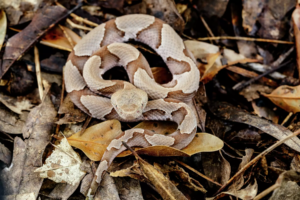 Many Texans are excited to see summer transition into fall, but this time period also comes with a warning. Each year between late summer and early fall is when eggs laid in the spring have hatched and live-bearing snakes have given birth, meaning more encounters with the young limbless reptiles—venomous and non-venomous alike—are more likely. Recently, a 10-inch-long baby rattlesnake was spotted in the grass outside the National Weather Center in Midland, Texas. Texas is home to more than 115 different species and subspecies of snakes—the highest number in the U.S., according to the Texas Parks and Wildlife Department (TPWD). Most snakes in the state are non-venomous and completely harmless. However, 15 percent are venomous, and can be grouped into four categories: coral snakes, copperheads, cottonmouths, and rattlesnakes.
Many Texans are excited to see summer transition into fall, but this time period also comes with a warning. Each year between late summer and early fall is when eggs laid in the spring have hatched and live-bearing snakes have given birth, meaning more encounters with the young limbless reptiles—venomous and non-venomous alike—are more likely. Recently, a 10-inch-long baby rattlesnake was spotted in the grass outside the National Weather Center in Midland, Texas. Texas is home to more than 115 different species and subspecies of snakes—the highest number in the U.S., according to the Texas Parks and Wildlife Department (TPWD). Most snakes in the state are non-venomous and completely harmless. However, 15 percent are venomous, and can be grouped into four categories: coral snakes, copperheads, cottonmouths, and rattlesnakes.
Fall Migration Sweeps the Nation! View migration predictions via BirdCast
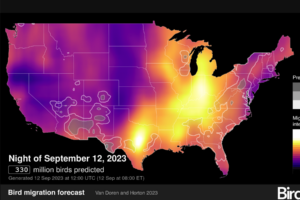 Have you seen any waves of migrating birds lately? The blazing yellow that stretches through the middle section of the above map shows us that heavy nighttime migration is expected through the central U.S. after sunset this evening. That could make tomorrow morning a birding bonanza from Texas to Michigan. Check out the three-night Birdcast migration forecast, or use the Migration Dashboard to see what happened last night in the skies above your state or county. Forecasts come from models trained on the last 23 years of bird movements in the atmosphere as detected by the US NEXRAD weather surveillance radar network. Models use the Global Forecasting System (GFS) to predict suitable conditions for migration occurring three hours after local sunset.
Have you seen any waves of migrating birds lately? The blazing yellow that stretches through the middle section of the above map shows us that heavy nighttime migration is expected through the central U.S. after sunset this evening. That could make tomorrow morning a birding bonanza from Texas to Michigan. Check out the three-night Birdcast migration forecast, or use the Migration Dashboard to see what happened last night in the skies above your state or county. Forecasts come from models trained on the last 23 years of bird movements in the atmosphere as detected by the US NEXRAD weather surveillance radar network. Models use the Global Forecasting System (GFS) to predict suitable conditions for migration occurring three hours after local sunset.
Hummingbird or moth? What to know about this bird-like insect in Texas
Article by Houston Chronicle
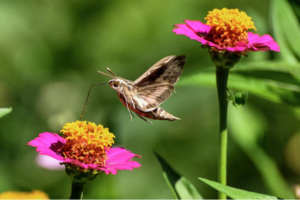 At first glance, this giant winged insect recently spotted in Texas might look and behave like a hummingbird, but it’s actually a moth. All around the Lone Star State, hummingbird moths are getting confused with the small, fast-flying birds due to their similar size and movement. The Cornell Lab of Ornithology Bird Cams recently filmed one of the insects, known as a white-lined sphinx moth, stopping by one of its bird feeders in west Texas with several hummingbirds. “One of these things is not like the other!” read the caption of the video shared on Facebook. Balaji Devarajan of Frisco, Texas also recently photographed one of the insects drinking nectar from a thistle as a hummingbird approached the same flower in Montgomery, Texas…
At first glance, this giant winged insect recently spotted in Texas might look and behave like a hummingbird, but it’s actually a moth. All around the Lone Star State, hummingbird moths are getting confused with the small, fast-flying birds due to their similar size and movement. The Cornell Lab of Ornithology Bird Cams recently filmed one of the insects, known as a white-lined sphinx moth, stopping by one of its bird feeders in west Texas with several hummingbirds. “One of these things is not like the other!” read the caption of the video shared on Facebook. Balaji Devarajan of Frisco, Texas also recently photographed one of the insects drinking nectar from a thistle as a hummingbird approached the same flower in Montgomery, Texas…
Meet Texas’s Strangest Turtle
Article by Texas Monthly
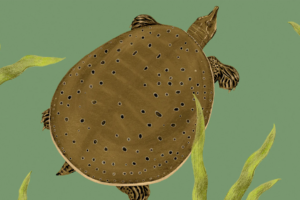 The creature paddling leisurely in the gin-clear water at Balmorhea State Park, in far West Texas, was the approximate size, shape, and color of a buttermilk flapjack. When I crouched along the grassy banks of a small ciénaga, or desert wetland, near the park’s lodge, the turtle raised its long, wrinkly neck and stared at me. I couldn’t help but smile. Spiny softshell turtles are delightfully strange. Their snorkel-like snout, pinprick eyes, and fat feet appear to be borrowed from a fantastical anime character. The Texas spiny softshell (illustrated above) that resides in the Pecos and Rio Grande river systems is one of four subspecies in the state. I’ve also been charmed by the Guadalupe spiny softshell, which is found in Central and South Texas.
The creature paddling leisurely in the gin-clear water at Balmorhea State Park, in far West Texas, was the approximate size, shape, and color of a buttermilk flapjack. When I crouched along the grassy banks of a small ciénaga, or desert wetland, near the park’s lodge, the turtle raised its long, wrinkly neck and stared at me. I couldn’t help but smile. Spiny softshell turtles are delightfully strange. Their snorkel-like snout, pinprick eyes, and fat feet appear to be borrowed from a fantastical anime character. The Texas spiny softshell (illustrated above) that resides in the Pecos and Rio Grande river systems is one of four subspecies in the state. I’ve also been charmed by the Guadalupe spiny softshell, which is found in Central and South Texas.
Lights Out, Texas! is helping keep the stars at night big and bright
Article by AgrLife
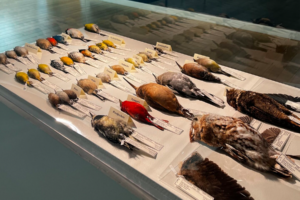 The stars at night do not just shine big and bright for humans here in Texas; they are also a vital tool for navigating migratory paths for almost two billion birds across North America. However, our feathered friends face a new challenge as they travel back to their homes and breeding grounds – light pollution that leads to building strikes. Migratory species traveling long distances face the most challenges, especially when traveling over or near large cities where light pollution is most common. An estimated 1 billion birds are lost to collisions with buildings and structures, according to a study in Annual Reviews. Since the 1970s, various threats to the U.S. bird population have led to the loss of one in every four birds, according to a study published in Science. Lights Out, Texas!, an initiative that seeks to enlist Texans to curb bird losses to building strikes during spring and fall migrations, hopes to reverse those trends.
The stars at night do not just shine big and bright for humans here in Texas; they are also a vital tool for navigating migratory paths for almost two billion birds across North America. However, our feathered friends face a new challenge as they travel back to their homes and breeding grounds – light pollution that leads to building strikes. Migratory species traveling long distances face the most challenges, especially when traveling over or near large cities where light pollution is most common. An estimated 1 billion birds are lost to collisions with buildings and structures, according to a study in Annual Reviews. Since the 1970s, various threats to the U.S. bird population have led to the loss of one in every four birds, according to a study published in Science. Lights Out, Texas!, an initiative that seeks to enlist Texans to curb bird losses to building strikes during spring and fall migrations, hopes to reverse those trends.
First Look: Pecan Springs Karst Preserve
Article by Texas Monthly
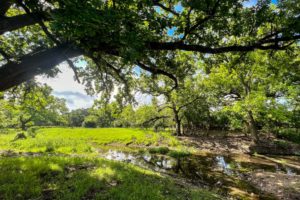 Bumping over cattle guards and cruising down a dirt road on a hot September morning, I can see a narrow, shimmering band in the distance that looks like a gentle stream catching the early light. That can’t be right, I tell myself. Seasonal streams all over the Hill Country have long since gone dry. Here in Williamson County, as in most of Central Texas, the U.S. Drought Monitor has declared a state of exceptional drought—the most extreme category—after hardly any rain at all during some of the hottest months in Texas history. But I’m not seeing a mirage. Soon the road dips into a shallow valley and passes by a scattering of massive hardwoods—pecan, bur oak, live oak—and it becomes clear that I am seeing a rare holdout: a glassy ribbon of cool water, straight from the Edwards Aquifer. “There are three different spring areas on the property, and all three of them flowed the entirety of last year….
Bumping over cattle guards and cruising down a dirt road on a hot September morning, I can see a narrow, shimmering band in the distance that looks like a gentle stream catching the early light. That can’t be right, I tell myself. Seasonal streams all over the Hill Country have long since gone dry. Here in Williamson County, as in most of Central Texas, the U.S. Drought Monitor has declared a state of exceptional drought—the most extreme category—after hardly any rain at all during some of the hottest months in Texas history. But I’m not seeing a mirage. Soon the road dips into a shallow valley and passes by a scattering of massive hardwoods—pecan, bur oak, live oak—and it becomes clear that I am seeing a rare holdout: a glassy ribbon of cool water, straight from the Edwards Aquifer. “There are three different spring areas on the property, and all three of them flowed the entirety of last year….
No Store Does More . . . for Texas Wildlife?
Article by Texas Monthly
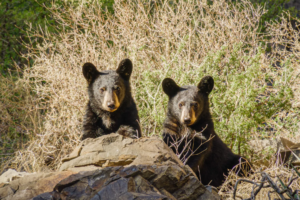 Deep in the thorny brush of a South Texas cattle ranch, an ocelot is quietly and casually padding over fallen mesquite leaves when it suddenly freezes mid-stride, prey in its sights. Then, with a flick of its tail, the spotted cat shoots through a maze of gray-green thicket with such stunning quickness that the camera has a hard time catching it. El Sauz Ranch, near Port Mansfield, is an ocelot haven, and the cowboys who steer cattle over the land, kicking up great clouds of dust, have become unlikely allies of the rare, exceedingly elusive feline. The vast majority of Texans will go their whole lives without seeing an ocelot in the wild, even as the entire United States population of the endangered cat is found in our state. Lucky for us, though it’s hard to catch one of the roughly one hundred remaining Texas ocelots on camera, it’s not impossible…
Deep in the thorny brush of a South Texas cattle ranch, an ocelot is quietly and casually padding over fallen mesquite leaves when it suddenly freezes mid-stride, prey in its sights. Then, with a flick of its tail, the spotted cat shoots through a maze of gray-green thicket with such stunning quickness that the camera has a hard time catching it. El Sauz Ranch, near Port Mansfield, is an ocelot haven, and the cowboys who steer cattle over the land, kicking up great clouds of dust, have become unlikely allies of the rare, exceedingly elusive feline. The vast majority of Texans will go their whole lives without seeing an ocelot in the wild, even as the entire United States population of the endangered cat is found in our state. Lucky for us, though it’s hard to catch one of the roughly one hundred remaining Texas ocelots on camera, it’s not impossible…
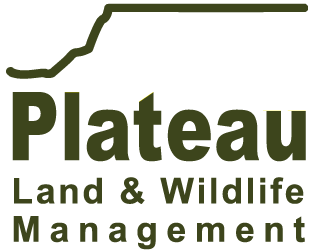

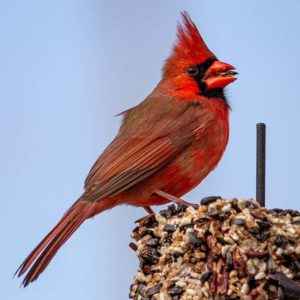
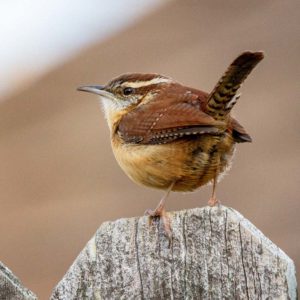
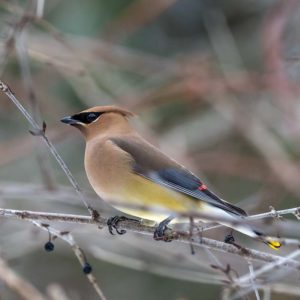
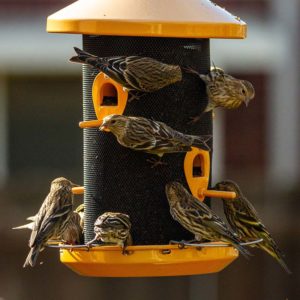
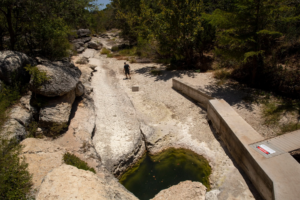



Sorry, the comment form is closed at this time.